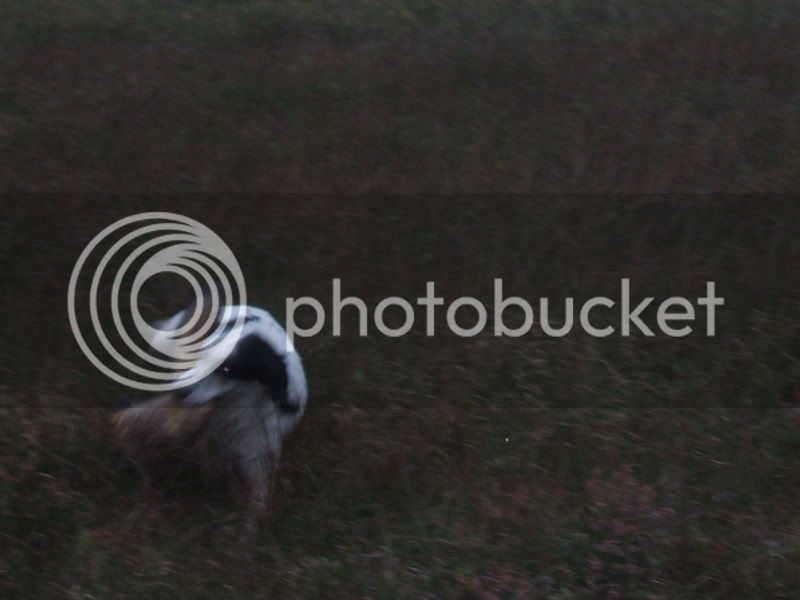I won't debate the issue of dogs vs. man trackers. Lets just note that I began my teaching career teaching police K-9 handlers to track visually.
With a good handler who knows what he is doing, the dogs are wonderful. All the mistakes and failures to find that I witnessed during training sessions were due entirely to mistakes made by the handler.
By teaching the officers to visually track, I was able to get them to see their mistakes, and stop blaming the dogs. They also were able to see " sign " that meant nothing to the dogs, and could even be missed by the dogs. This is important in police work for locating discarded clothing or other items that can provide DNA, or fingerprint information that can positively identify a suspect, and place him at the scene of the crime.
In trailing animals by scent, reading the tracks Helps the officer keep the dog on the right scent trail, and even more importantly, insures that he doesn't doubt the dog, and pull him off the right scent trail.
Dogs used to search for animal scents are often, but not always, " Ground scenters" like Bloodhounds. They sniff the odors produced by dead skin cells( rafts) left by the fleeing animal close to where their feet touch the ground. On game trails, there may be little scent from a deer's feet on the actual trail, while there is much more above on branches and leaves of brush that is rubbed by the BODY of the deer as it travels down the trail. Some ground scenting dogs miss that source of scent, by sniffing UNDER IT!
Air scenting dogs can also be used, and they are often better at trailing animals through thick brush, or across hard surfaces, where the dead skin( think of dandruff) may be easily blown away several feet or even yards by the winds. There will be a scent trail, but it will be at a distance( downwind) from the true trail, where the footprints are located. Both ground scenting dogs and air scenting dogs will usually follow the scent trail that contains the most Scent, as they are trained to go from weak to stronger scent. That takes them off the true trail, and to the distant scent trail.
If the handlers don't understand this, they see the dog sniffing busily along a trail( or worse, crashing through thick brush the handler can't go through) where there are obviously no tracks, begin to doubt their dogs, and pull them off the track, when the dogs were doing fine. In fact, as soon as the animal leaves an open area, and returns to locations where the terrain, or forest growth, acts as a wind barrier, the scent trail will " magically " return to the true trail, and the animal tracks.
I have also worked with hunting dog trainers, and shown them how to use tracking skills to work with their dogs to locate game, using both pointers, and retrievers.
I think the main problem with dog folks' training, is that they have never been exposed to William Syrotuck's, "Scent and the Scenting Dog", which explains what creates the odor, and how it gets from the animal to the ground/air for the dogs to follow.
If you shoot birds on the wing, and have a retriever go out to retrieve the downed bird, you can often see the dog following a looping track of wind blown scent, down wind of the actual line of flight, but finally coming back to where the bird hit the ground. This is the same kind of thing I have seen with dogs who are tracking other game, or people, using scent.
I trained the K-9 handlers to stick with the visual trail of tracks, while the dog moved with the scent trail. If the two trials diverged too much, then a second tracker is put on the visual trail, while the handler stays with his dog. The visual tracker's job was to maintain the trail, and look for discards. If he found a good footprint impression, he was to either photograph it, or mark it for photography and/or casting later. The same occurred with discards. Often a separate Crime Scene Evidence Technician was called in to actually photograph and collect the evidence, while the trackers kept on the trail.
A dog is only as good as his handler is trained. A dog could care less about blood, or how much of it is being left by a wounded animal. A dog does not note drag marks indicating a broken leg, or an animal that is weakening. A dog is not going to read sign on branches and leaves that tell him where the animal is injured and, sometime, how badly, or insignificantly.
So, recognize the limitations of using dogs(and their handlers), and consider filling in those gaps with visual tracking skills.






